If you’re thinking about flying a drone in London, it’s essential to know that the city has some of the most complex and strict drone laws in the UK.
The unique challenges of London’s airspace make flying a drone here much more complicated than in any other British city.
It’s not just a matter of taking your drone out and launching it wherever you like – there are a lot of rules and regulations you need to follow to stay safe and legal.
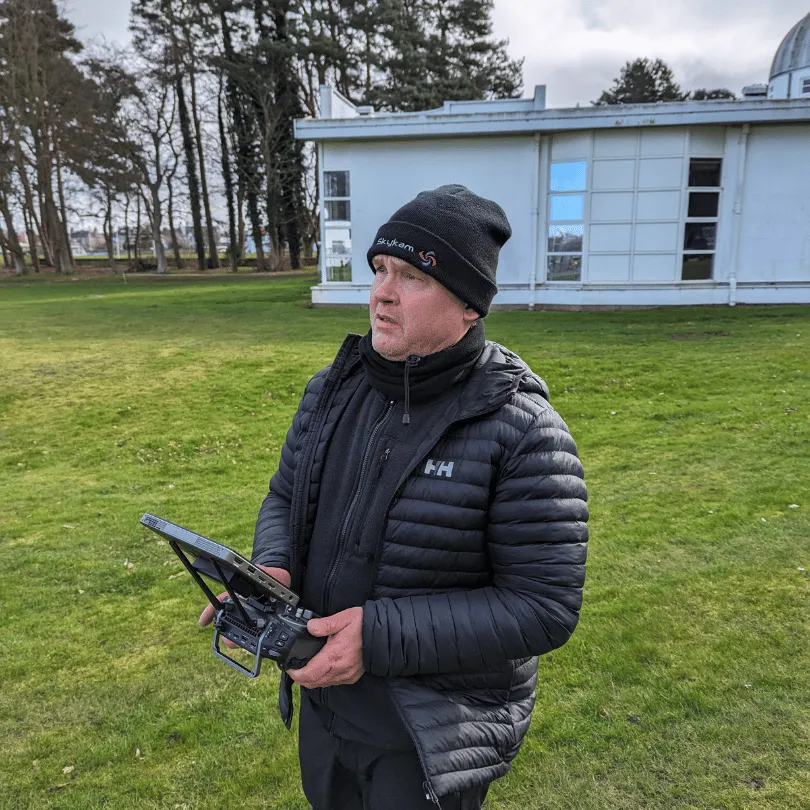
I run London’s largest drone services, I’ve got plenty of experience navigating London’s complex laws and applying for permission to fly in the city.
I know firsthand how tricky it can be to understand where you’re allowed to fly, what areas are off-limits, and how to get the necessary authorizations to operate your drone legally.
In this guide, I’m going to share my knowledge and experience to help you understand:
- Identify restricted airspaces and no-fly zones in London
- Understand the flight authorization application process
- Learn safe and responsible drone operation practices
- Explain London’s complex airspace laws and regulations
- Discuss challenges of flying drones in London’s urban environment
By the time you’re done reading, you’ll have a solid grasp of what it takes to fly your drone in London without running into trouble with the law or putting yourself and others at risk.
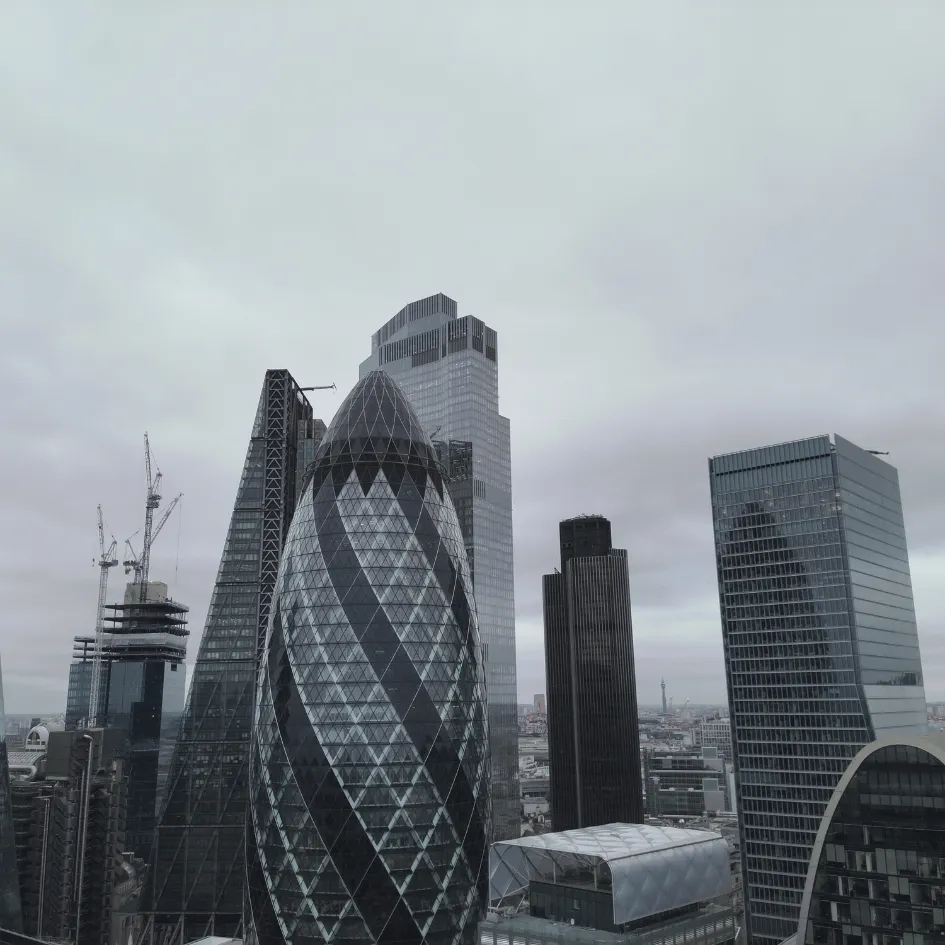
LONDON’S 2024 DRONE LAWS AND REGULATIONS
In London, the drone laws are the same as the rest of the UK. These rules are set by the Civil Aviation Authority(CAA).
Londons Drone Laws For 2024 Are:
- Drone operators must be at least 12 years old to fly independently
- Drones are not permitted to fly higher than 400 feet (120 meters)
- Operators must maintain a line of sight with their drone at all times
- Permission is required before flying in restricted airspace
- Do not fly your drone within a 5-kilometer radius of airports
- A minimum distance of 50 meters must be maintained from uninvolved persons
- Drones below 250 grams are permitted to fly closer and over people
- Drones weighing 250 grams or more must be operated at least 150 meters away from parks, industrial areas, residential zones, and other built-up locations.
- If a drone is equipped with a camera, the operator must register for an Operator ID with the CAA
- Insurance is mandatory for commercial drone use
- Compliance with these regulations is required during both daytime and nighttime operations.
It’s important to follow these laws because London’s airspace is really busy and has a lot of restrictions.
London has a ton of air traffic and airports that are really close to each other. In fact, the five biggest airports in London handle over a million flights every year within a 60-mile radius.
That’s a lot of planes coming and going!
All these flights create a big, tangled web of flight paths in the air above London.
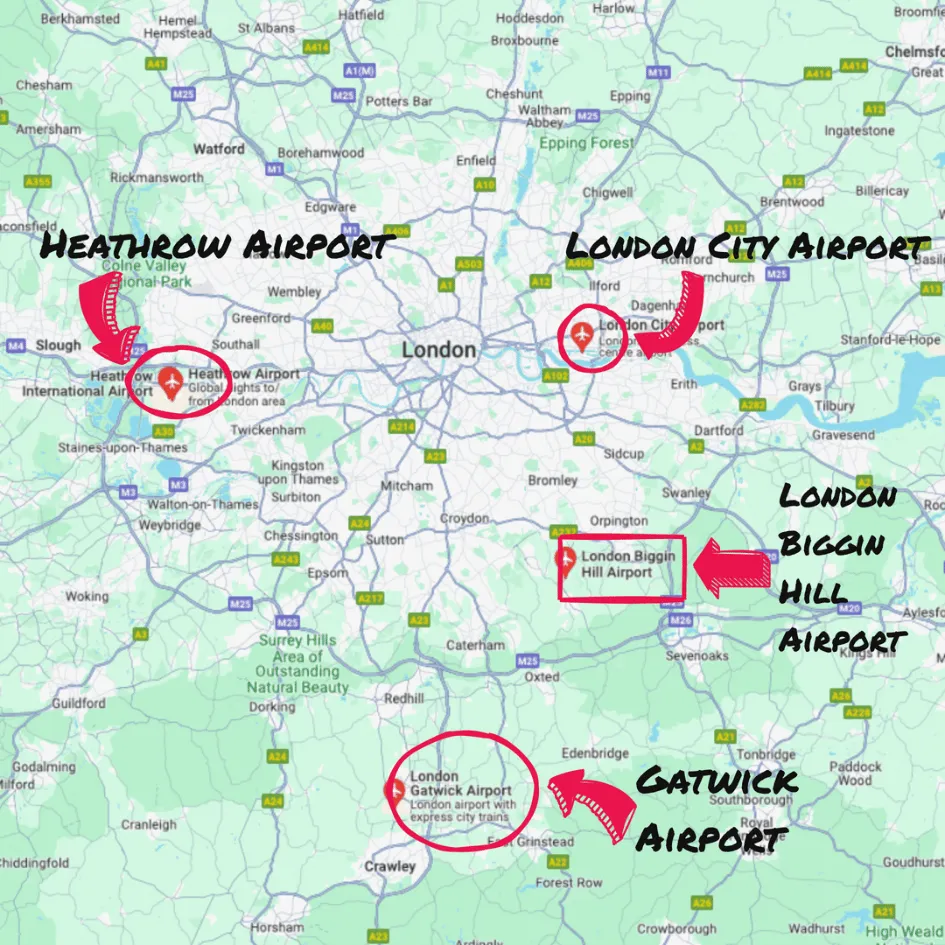
Because there’s so much air traffic, you can’t just fly your drone wherever you want in London.
In most cases, it’s actually against the law to just throw your drone up in the air without permission. The busy airspace means that there are a lot of areas where drone flights are restricted or completely banned.
So, if you want to fly a drone in London, you need to do your homework first.
It might take some extra effort to navigate all the laws, but it’s important to do things the right way to keep everyone safe and avoid getting in trouble.
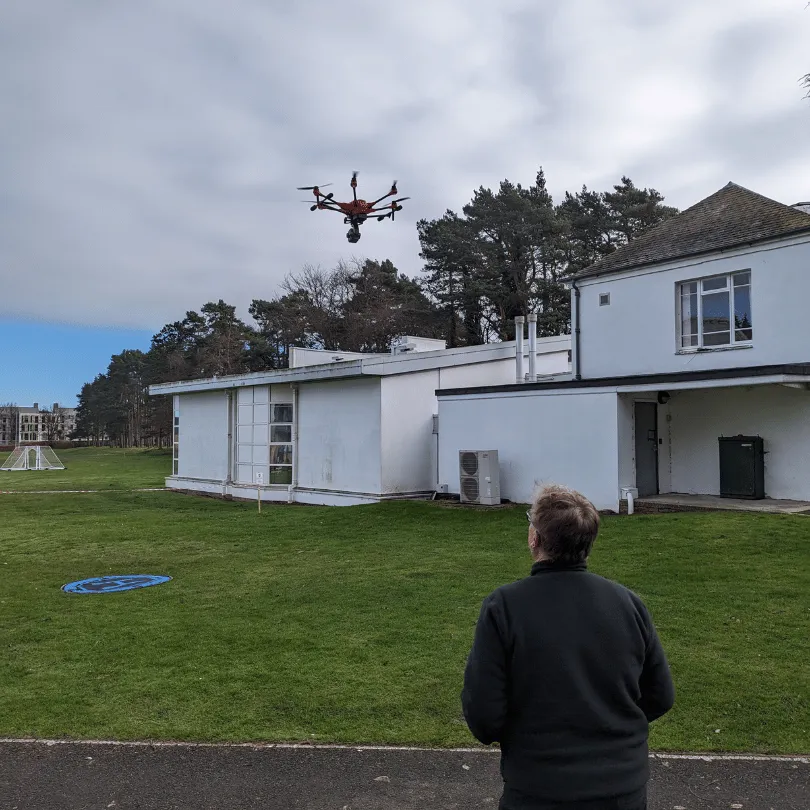
What Drone Licence You Need To Fly A Drone In London
The type of license you need to fly a drone in London depends on several factors, including the weight and capabilities of your drone, your intended purpose for flying, and the specific location where you plan to operate.
Flyer ID & Operator ID
If your intention is to fly a small drone weighing less than 250 grams and you plan to operate it exclusively within designated drone flying parks, you will only be required to obtain a Flyer ID and an Operator ID.
To acquire your Flyer ID, you must complete a brief, 20-minute open-book test.
This assessment is designed to ensure that you possess a basic understanding of the rules and regulations governing drone flight in the UK.
>> I Have All Flyer ID Questions & Answers Here <<
In addition to the Flyer ID, you will also need to secure an Operator ID.
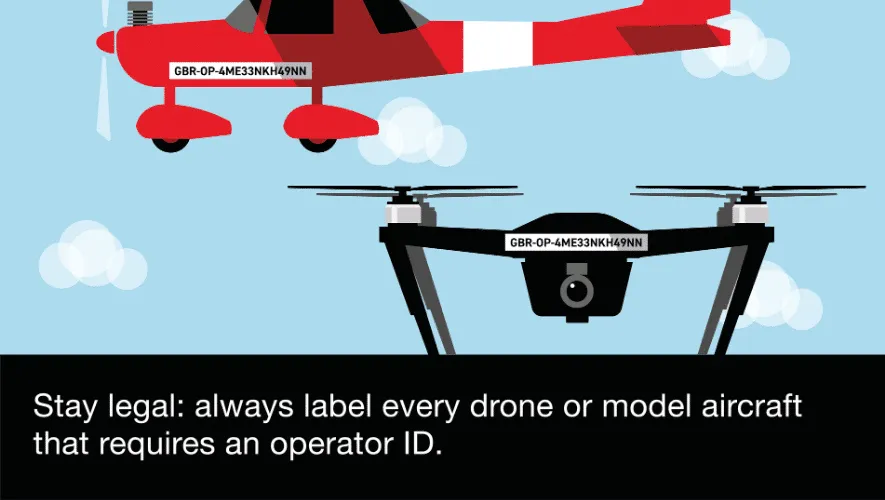
This process involves submitting your personal information online and paying an annual fee of £10.33. The Operator ID serves as a means of identifying the owner of the drone and ensuring compliance with the relevant regulations.
>> My Step-By-Step Guide On Getting A Operator ID <<
It is crucial to note that your Operator ID must be prominently displayed on your drone at all times.
This requirement helps to promote accountability and facilitate the identification of drone operators in the event of any incidents or violations.
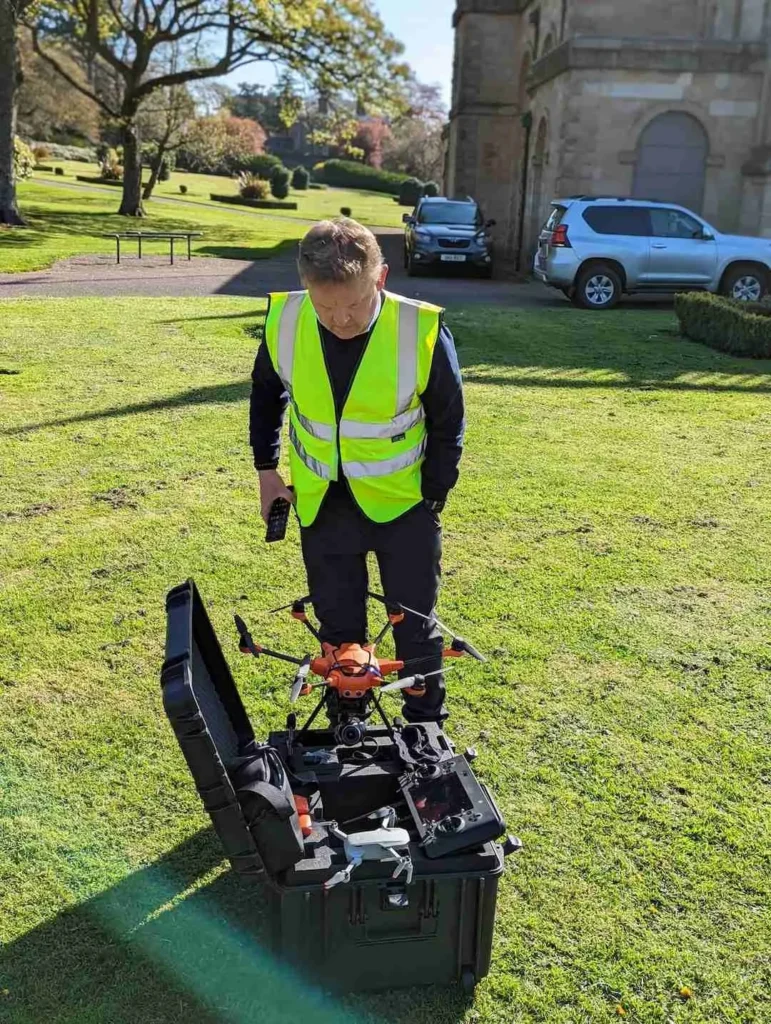
GVC Operational Authorisation
If you plan to fly a drone in most areas of London, apart from the designated drone flying parks, you will need to obtain a GVC (General Visual Line of Sight Certificate) licence.
To acquire a GVC licence, you must take part in a multi-day classroom training program, pass a rigorous theory test, and demonstrate proficiency in a practical drone flight assessment.
The GVC licence allows you to operate drones weighing between 250 grams and 25 kilograms throughout London and the United Kingdom.
You will also need a GVC if you want to fly a sub 250g drone outside of designated drone zones in London.
However, obtaining the GVC licence is not the only requirement for flying a drone in London.
You must also seek permission from the Civil Aviation Authority (CAA) and National Air Traffic Services (NATS) for each specific flight you intend to undertake.
The process of obtaining permission involves submitting a detailed flight plan, which must include the purpose of the flight, your insurance details, license information, and flight logs.
This step is crucial to ensure that your proposed flight adheres to all relevant safety regulations and does not interfere with other air traffic in the area.
It is important to note that the permission process can be complex and time-consuming, as the authorities will carefully review your application to ensure that all necessary precautions have been taken.
I will provide further details on this process in a later section of this guide. First lets look at where you can fly a drone in London.
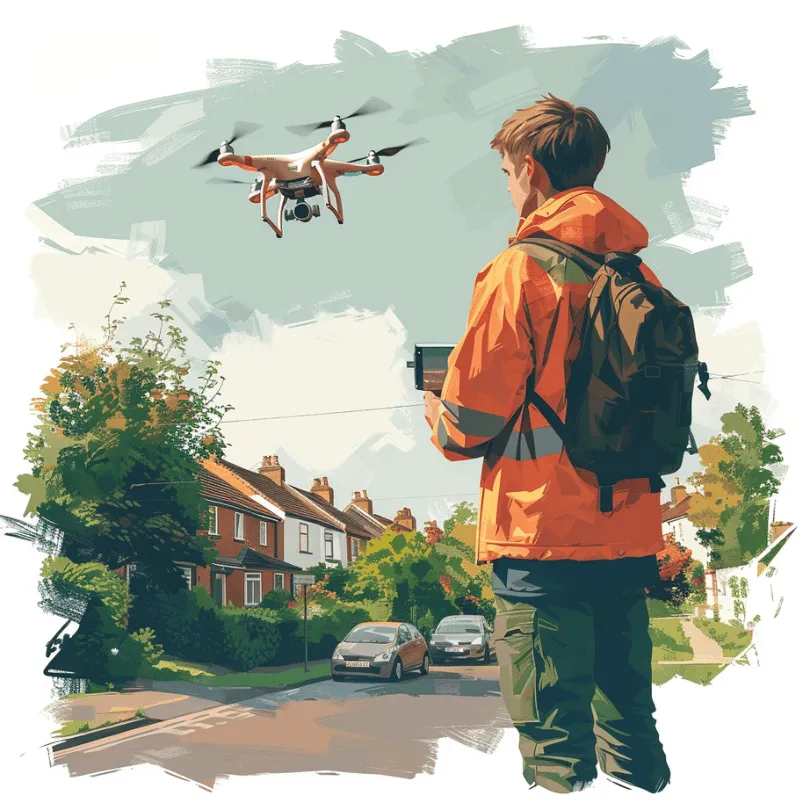
WHERE YOU CAN FLYING A DRONE IN LONDON: HOW TO CHECK LONDON’S Drone NO-FLY ZONES
When planning your drone flights in London, it’s crucial to know where you can safely and legally operate your drone. The Altitude Angel Drone Safety Map is a fantastic resource for answering the question, “Where can I fly a drone in London?”
This free, user-friendly tool offers drone pilots an all-in-one solution for staying safe and informed in the skies.
Follow these simple steps to use the Altitude Angel Drone Safety Map and determine where you can fly your drone in London:
- Visit the Altitude Angel Drone Safety Map website at https://www.altitudeangel.com/solutions/dronesafetymap.
- Zoom in on the map to locate London, or use the search bar to find the city quickly.
- Look for areas marked as safe for drone flights. These will be areas without any restrictions or hazards.
- Pay close attention to no-fly zones, such as airports, government buildings, and other restricted areas. These will be marked on the map.
- Check real-time weather conditions, as well as aeronautical and ground hazards, to ensure your flight will be safe.
Remember, the Altitude Angel Drone Safety Map is a free resource, making it an excellent tool for both professional and recreational drone pilots. By using this tool, you’ll be better equipped to make informed decisions and enjoy safe drone flights in London.
LONDON BOROUGH DRONE RULES
Navigating the various drone operator regulations in London’s various boroughs can be a challenging task for both hobbyists and professionals. Each borough has its own set of rules and guidelines for drone operations, which must be adhered to in order to ensure safe and responsible flying. In this guide, we will provide an overview of the drone pilot rules across different London boroughs.
Understanding these rules is essential for drone pilots who wish to capture breathtaking aerial footage of London’s iconic landmarks and picturesque landscapes, while staying compliant with local regulations.
| London Borough | Drone Permission Required | Application Process/Email | Additional Notes |
|---|---|---|---|
| Hackney | Yes | Hackney’s FilmApp application system | Public liability insurance (£5,000,000) & risk assessment required |
| Greenwich | No official policy | N/A | Always check for updates on local regulations |
| Chelsea (Congested) | Not allowed | N/A | Applies to all congested areas such as Lewisham, Dagenham, Barking, Redbridge |
| Lambeth | Not allowed in parks | N/A | Exceptions for authorized events |
| Richmond Upon Thames | Yes | Request permission from landowner/occupier | Public Spaces Protection Order 2020 |
London Borough Drone Rules Comparison Table
Note: This table provides a general overview of drone permissions across various London boroughs. It is crucial to stay updated with the latest regulations and consult the local council or appropriate authorities before planning any drone flights in a specific area. Always adhere to the UK’s Civil Aviation Authority (CAA) regulations and the Drone Code to ensure safe and responsible drone flying.
DRONE FLYING REGULATIONS IN HACKNEY
Operating a drone for recreational purposes in Hackney requires strict adherence to regulations, as drone flying is not permitted in any of the borough’s parks. To fly and film using a drone within Hackney, you must follow a series of steps to ensure compliance with local rules and maintain safety.
APPLICATION PROCESS
Before taking flight, you must complete an application to inform Hackney Borough of your intentions. This process enables the local authorities to ensure that your planned drone flight is safe and does not pose any risks to people or property. To apply, follow these steps:
- Visit Hackney’s FilmApp application system and complete the online application form.
- Provide details about your planned drone flight, including the location, date, and time of your intended activity.
- Describe the purpose of your drone flight, such as filming, photography, or recreational flying.
ADDITIONAL REQUIREMENTS
In addition to the application, you must also fulfill the following requirements:
- Obtain public liability insurance with a minimum coverage of £5,000,000. This insurance is necessary to protect yourself and others in case of accidents or damage caused by your drone flight.
- Conduct a risk assessment if you plan to film on council property or public highways. This assessment should identify potential hazards and outline measures to mitigate these risks during your drone flight.
By following these regulations and completing the required application process, you can ensure a safe and responsible drone flying experience in Hackney. Always check for any updates to local regulations and consult with the Hackney Borough Council if you have any questions or concerns about drone flying in the area.
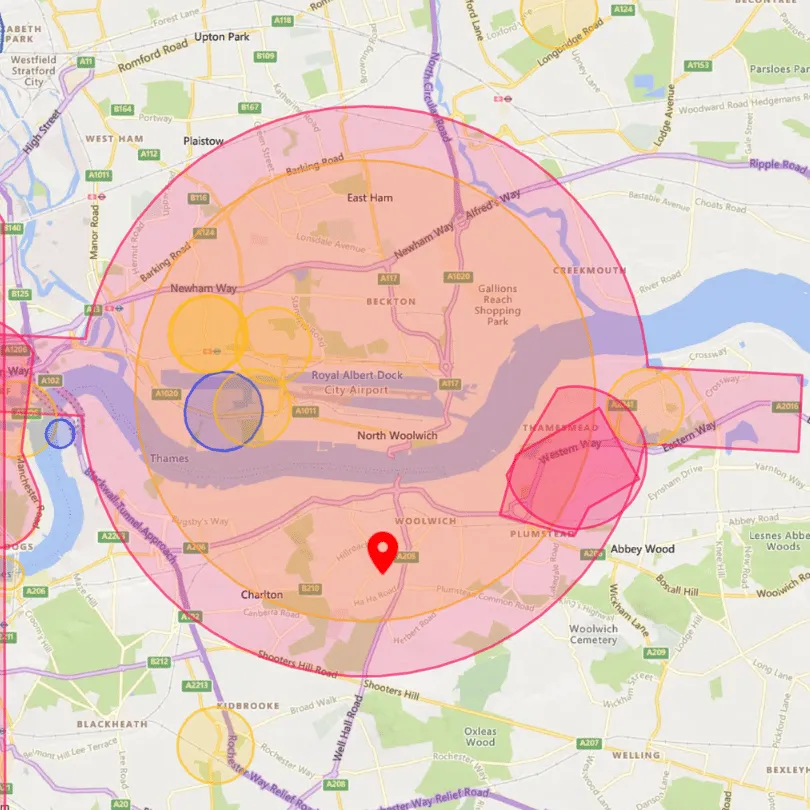
DRONE LAWS FOR GREENWICH BOROUGH, LONDON
Greenwich is a borough located in southeast London, England. It is well-known for its historical landmarks, such as the Greenwich Observatory, which is the location of the Prime Meridian and Greenwich Mean Time (GMT). However, when it comes to drone flying, Greenwich does not currently have any official policies or regulations in place.
This means that drone pilots cannot assume they have free reign to fly their drones in any public park or open space within the borough without prior notification.
It is important for drone pilots to be aware of any rules and regulations set by the local council before they fly their drones in a public highway or any area.
This is because there may be changes to the policies, or certain areas may be restricted or prohibited for drone flying.
It is worth noting that neighbouring boroughs, such as Barnet and Camden, have similar drone policies as Greenwich. This highlights the importance for drone pilots to always check the local policies before flying their drones, regardless of which borough they are in. By doing so, they can ensure they are flying their drones safely and responsibly, without infringing on any local laws or regulations.
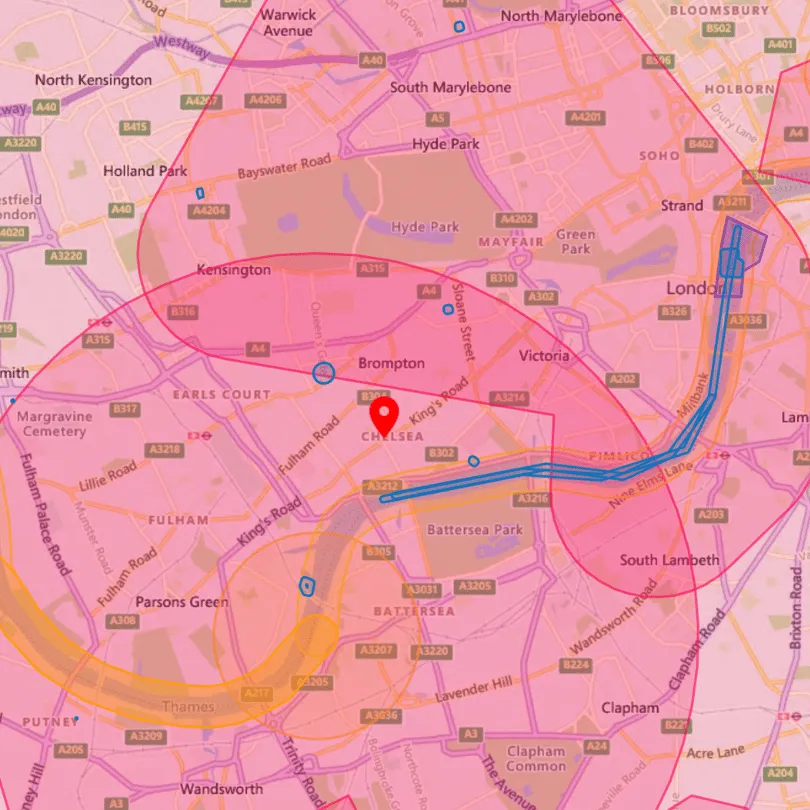
DRONE FLYING REGULATIONS IN CHELSEA AND OTHER CONGESTED AREAS
Chelsea is classified as a congested area, which presents unique challenges and restrictions for drone enthusiasts. Due to these constraints, drone flying is not allowed within the borough. This rule extends to all parks and open spaces, ensuring the safety and privacy of residents and visitors alike. Similar restrictions apply to other congested areas, including Lewisham, Dagenham, Barking, and Redbridge.
UNDERSTANDING CONGESTED AREA RESTRICTIONS
In congested areas, the risks associated with drone flying are heightened due to increased population density and the potential for interference with infrastructure or other aircraft. The UK’s Civil Aviation Authority (CAA) enforces strict regulations for drone operations in these areas to protect public safety, privacy, and security. Some of the main reasons for these restrictions include:
- Safety Concerns: Drones pose potential risks to people and property on the ground, especially in congested areas. Limiting drone flights in these areas helps reduce the risk of accidents or injuries.
- Privacy Considerations: Drone cameras can inadvertently capture images or videos of individuals without their consent, raising privacy concerns. Restricting drone flights in congested areas helps protect residents’ and visitors’ privacy.
- Air Traffic Management: Congested areas often have higher levels of air traffic, including helicopters and other low-flying aircraft. Restricting drone flights in these areas reduces the risk of collisions and airspace conflicts.
- Security Concerns: In some cases, drone flights may pose security risks, particularly in areas with sensitive infrastructure or high-profile events. Restricting drone flights in congested areas helps maintain security and prevent unauthorized surveillance.
STAYING INFORMED AND COMPLIANT
Before flying a drone in any area, it is essential to stay informed about local regulations and restrictions. Check with the local council or consult the CAA’s Drone Safe website for up-to-date information on where you can and cannot fly your drone. By understanding and adhering to these regulations, you can ensure a safe and enjoyable drone-flying experience while respecting the safety, privacy, and security of others.
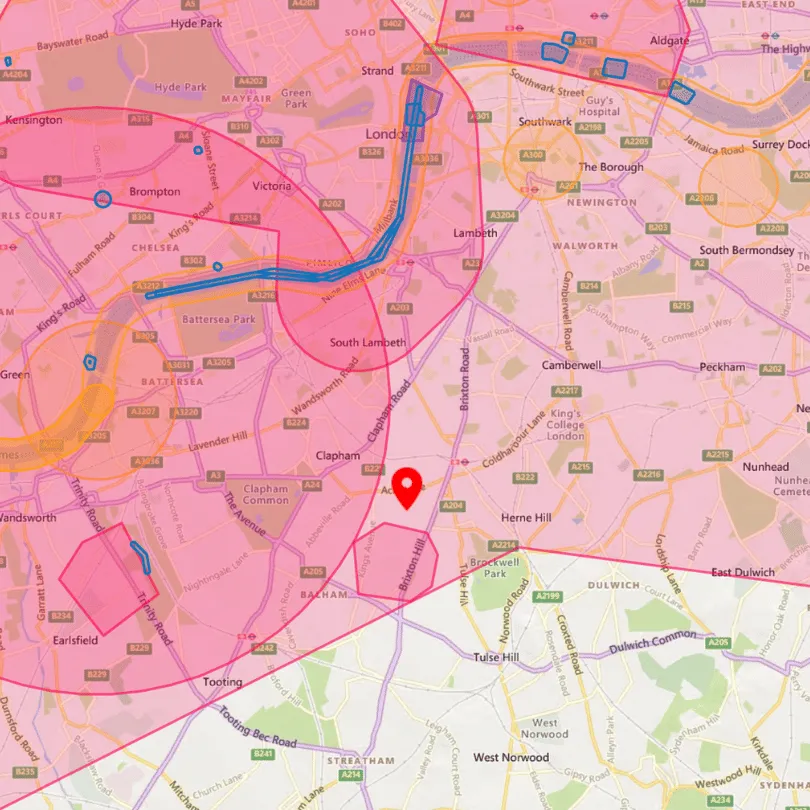
DRONE FLYING REGULATIONS IN LAMBETH
Lambeth’s current Parks and Open Byelaws prohibit drone flying in the borough’s parks. This means that you are not allowed to operate your drone in any park within Lambeth. To stay informed about any changes in regulations, it is advisable to consult the local council before planning any drone flights in the area.
EXCEPTIONS FOR AUTHORIZED EVENTS
The only exception to Lambeth’s drone restrictions is if you are flying your own drone legally or as part of an authorized event. In such cases, you may be permitted to operate your drone in specific locations or under certain conditions. However, it is crucial to check with the show operator or local council before flying to ensure you are compliant with the latest regulations.
DRONE FLYING REGULATIONS IN RICHMOND UPON THAMES – LIMITED ACCESS
According to the Public Spaces Protection Order 2020 (page 4), drone flying without express prior consent is prohibited in Richmond Upon Thames. This means that you must obtain permission from the landowner or occupier before flying a drone in their area. Failure to do so may result in penalties or other legal consequences.
APPROVED LONDON DRONE FLYING ZONES
RICHMOND DRONE PARK
Richmond Park is an excellent location in London for drone enthusiasts. The park features designated open spaces and areas specifically for drone flying, providing ample space to meet various needs.
When flying in Richmond Park, adhere to the following rules:
- Wingspan must not exceed 1m (4m for gliders)
- Powered aircraft and drones cannot be flown after 13:00 on
weekends or bank holidays - No flying above 100m/330feet
- No flying if deer are present
- No competitive flying or launching of balloons/rockets
- No flying using virtual reality headsets
- Flyers are required to have relevant public liability insurance
Drones and remote-controlled flying models model aircraft are permitted only on the Flying Field in Richmond Park, ensuring a safe and enjoyable experience for all park visitors.
EALING
Drone flying in Ealing is allowed at the discretion of the park ranger. However, flying is not permitted in Gunnersbury Park, Hanwell Zoo, or nature conservation areas.
To request the permission needed to fly in a park within Ealing, follow these steps:
- Email parks@ealing.gov.uk with your request.
- Provide the name of the park where you’d like to fly your drone.
- Include the date of your intended flight.
By obtaining permission from the park ranger and adhering to local regulations, you can enjoy drone flying in Ealing responsibly and safely. Always check for any updates to local regulations and consult with the park ranger or local council if you have any questions or concerns about drone flying in the area.
DRONE NO FLY RESTRICTION AREAS LONDON
For those interested in flying a drone in London, it’s important to note that there are three drone flight restricted zones in Central London that should be avoided. These zones are referred to as R157, R158, and R159, and it’s essential that drone pilots are aware of their locations and boundaries before taking off. This is in line with local regulations and safety measures to prevent incidents and ensure the well-being of the public.
If you want to check whether a certain area is classed as a no-fly zone, there are a few ways that you can do this.
The first way is to use the interactive map on the Drone No Fly Zone website. This will show you all of the restricted areas in London and how they are classified.
The second way is to download the My drone app. This app has an up-to-date list of no-fly zones across the UK and also includes information on each zone, such as its classification and height restrictions.
Whichever way you decide to check for no-fly zones, it is always important to double-check with your local council before flying in any new areas.
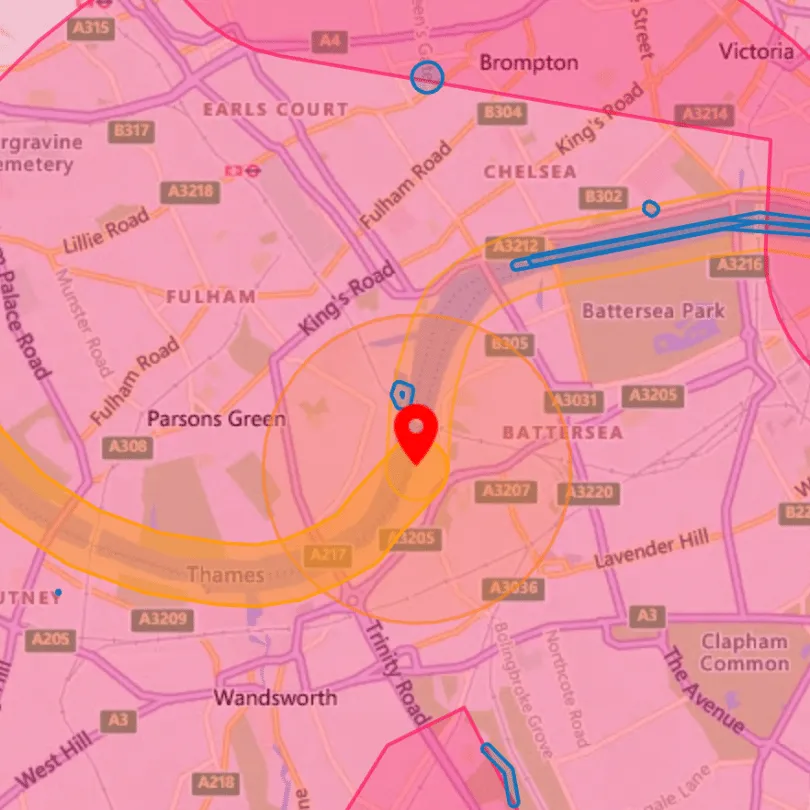
BATTERSEA HELIPORT DRONE FLIGHT APPLICATIONS
Battersea Heliport, the main helipad for airports in London, requires drone operators to follow specific procedures to operate unmanned aircraft within their ATZ.
To do so, you must:
- Submit a UAV flight approval form 48 beforehand and a map detailing the area of operation.
- Pay £150 (excluding VAT) for flights within the ATZ – £25 for flights outside the traffic zone
- Contact air traffic control at least one hour before launch to obtain ATC clearance on the day of the flight.
- Maintain public liability insurance for all aviation risks
Charges
The charge is for assessment and approval is to operate model aircraft at one location within a defined radius. Repeat flights under the same approval may be authorised at no extra cost for a period of up to 12 months provided the parameters for the flight & location have not changed. Any additional flights will require prior authorisation for the approval to be re-activated.
| UAV Safeguarding Assessment & Operation Permit Type | Price (plus VAT) |
| Within ATZ and Circuit (Approach and Take off) | £150.00 (£180.00 incl.) |
| Within ATZ and of outside of the circuit (including R157 restricted Airspace where it coincides with ATZ) | £25.00 (£30.00 incl.) |
Battersea Heliport Drone Application Pricing
To submit your application, find the Battersea Heliport contact details here.
Drone flight requests with London Heliport aerodrome must be submitted 48 hours. If you have any urgent requirements that sit outside of these parameters, please submit a flight request, and contact us at +44207 228 0181 during office hours or email drones@londonheliport.co.uk
The operator must also contact London Heliport at least 1 hour prior to launching the UAS to obtain ATC Clearance. Please ensure that you have your authorisation number.
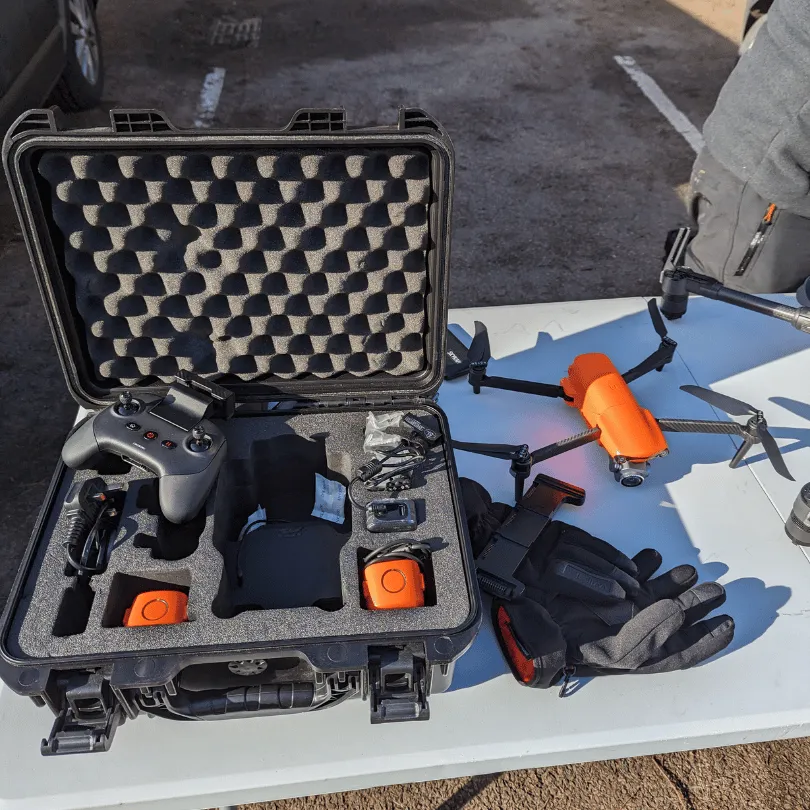
R157, R158 & R159 RESTRICTED FLYING ZONES
Drone pilots must be aware of three major restricted flying zones in Central London: R157, R158, and R159. Flying within these zones is prohibited unless you receive approval from NATS. To apply, submit a non-standard flight (NSF) application at least 21 days in advance, though approvals for London restricted zones may take longer.
When submitting your NSF application, please ensure that you include the following flight details:
- Start date: Please indicate the date you plan to begin your flight in the format DD/MM/YYYY.
- End date: Please indicate the date you plan to end your flight in the format DD/MM/YYYY.
- Maximum Height of Operation: Please indicate the maximum height you plan to fly above ground level (AGL) in feet.
- Flight path map/file: Please attach a map or file that outlines your intended flight path. Accepted file types include kml, kmz, pdf, and zip. If you are submitting multiple files, please combine them into a zip file.
- Additional information: Please include the location of your flight, such as the airport or area where you plan to operate your flight.
By providing all of the necessary information and adhering to the appropriate guidelines, you can increase the likelihood of your NSF application being approved.
Visit the NATS website to submit your NSF application.
LONDON CITY AIRPORT DRONE OPERATIONS
If you are planning to fly your drone or any unmanned aerial vehicle (UAV) near London City Airport, it is important to inform the airport authorities of your activities. Here are the steps you need to follow to do so:
- Assess and document your UAV: All UAVs used for commercial or private purposes within the airport’s airspace should be assessed and documented by London City Airport and by NATS.
- Obtain permission from the CAA: If you are using your UAV for commercial purposes, you will need to obtain permission from the Civil Aviation Authority (CAA) in accordance with Article 94 of the 2016 Air Navigation Order (ANO 2016).
- Check the flight restriction zone (FRZ): There is a 5km ‘no drone zone’ (FRZ) around London City Airport. The exclusion zone stretches from Canary Wharf in the west to Thamesmead in the east, as well as a radius stretching from Woolwich to the south and East Ham in the north.
- Apply for a Non-Standard Flight (NSF) approval: If you are planning to fly your drone within the FRZ, you will need to apply for an NSF approval from NATS with a minimum of 21 days’ notice. Applications submitted less than 7 days in advance of the flight may not be processed.
- Submit your NSF application: Submit your NSF application with all necessary details, including your flight path, start and end dates, and maximum height of operation. The application will be forwarded to London City Airport and other airspace stakeholders by NATS for review.
- Obtain approval from NATS: You will need to obtain approval from NATS before you can fly your drone within the airport’s airspace.
- Follow all regulations and guidelines: As a UAV pilot, you are responsible for your aircraft and must ensure that you follow all regulations and guidelines related to UAVs. This includes not taking off your UAV without being confident that you can carry out the planned flight under current or predicted conditions.
By following these steps and complying with all regulations and guidelines, you can help ensure the safety and security of the airspace around London City Airport.
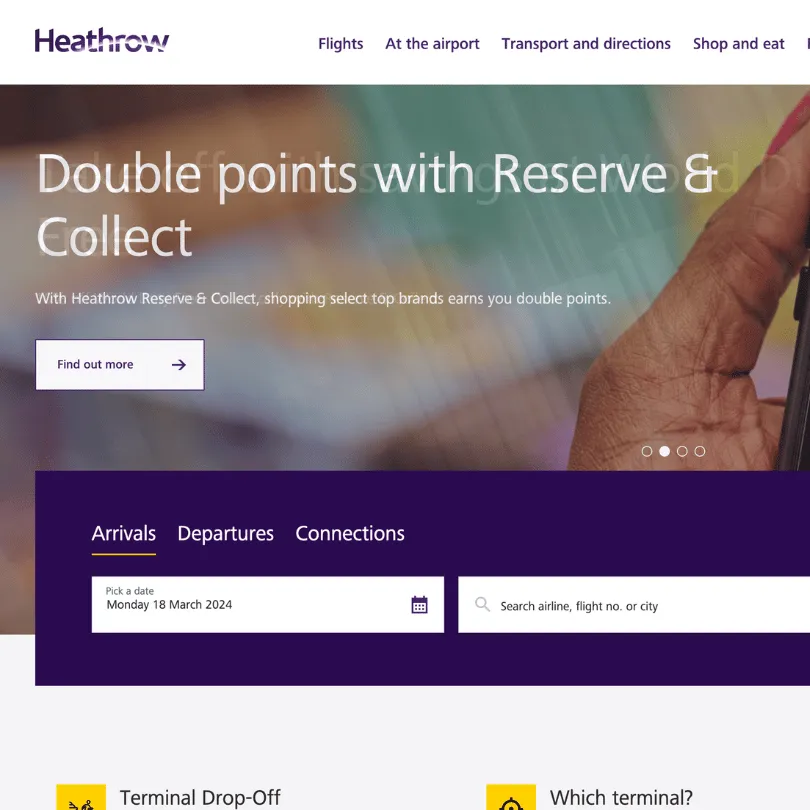
HEATHROW AIRPORT DRONE APPLICATION
If you are planning to fly a drone in the vicinity of Heathrow Airport, it is essential to obtain the necessary approvals to ensure the safety and security of the airspace.
Here are the steps you need to follow to obtain approval for flying a drone in Heathrow Airport:
- Request an NSF approval from NATS: Any request to operate a drone within Heathrow’s Flight Restriction Zone (FRZ) or Runway Protection Zone (RPZ) should submit their application to NATS in the first instance. You can do this by visiting https://nsf.nats.aero/drones-and-model-aircraft/ and submitting your application with all necessary details.
- Seek approval from Heathrow’s Works and Safeguarding Manager: In addition to obtaining an NSF approval from NATS, drone pilots will also need to seek approval from Heathrow’s Works and Safeguarding Manager. You can contact them at safeguarding@heathrow.com to discuss the approval process or the feasibility of operating a drone on the airfield. They will review and assess any potential safety implications before granting approval.
- Wait for approval: Under no circumstances should drones be operated until approval is granted by Heathrow. It is important to wait until you have received all necessary approvals before flying your drone in the vicinity of Heathrow Airport.
By following these steps and complying with all regulations and guidelines related to drone operations, you can help ensure the safety and security of the airspace around Heathrow Airport.
If you have any questions or concerns regarding this procedure, please address them to the Heathrow Works and Safeguarding Manager at safeguarding@heathrow.com.
THAMES
If you plan to fly your drone over the River Thames, it is important to follow the necessary guidelines to ensure the safety of river users and comply with relevant legislation. Here is a guide to flying drones over the River Thames:
- Notify the Port of London Authority (PLA): The PLA has a statutory responsibility for the safety of all those using the River Thames. To ensure that your drone flight does not pose a hazard to navigation, you must notify the PLA at least 3 working days in advance of your intended flight. Complete as much detail as possible through the Drone Online Notification Portal.
- Obtain necessary permissions: To fly your drone over the River Thames, you must obtain necessary permissions from other relevant authorities, including the Civil Aviation Authority, National Air Traffic Services, and relevant riparian local authorities and landowners. If your drone flight and exclusion area will impact on adjacent land, you must obtain consent from the relevant landowner.
- Comply with legislation and codes of practice: As a drone operator, you must comply with relevant legislation and codes of practice. Ensure that you are aware of any relevant restrictions or requirements, such as exclusion areas or necessary consents for flying near high-profile locations or structures.
- Obtain a filming license if required: Some drone flights over the River Thames may require a filming license. If this is the case, the PLA will respond with further questions and instructions.
- Obtain written permission from the riverside landowner: Before taking off and landing your drone, ensure that you have the prior written permission of the riverside landowner.
By following these guidelines and complying with all relevant regulations, you can ensure that your drone flight over the River Thames is safe and responsible.
If you have any questions or concerns, contact the PLA or relevant authorities for further guidance.
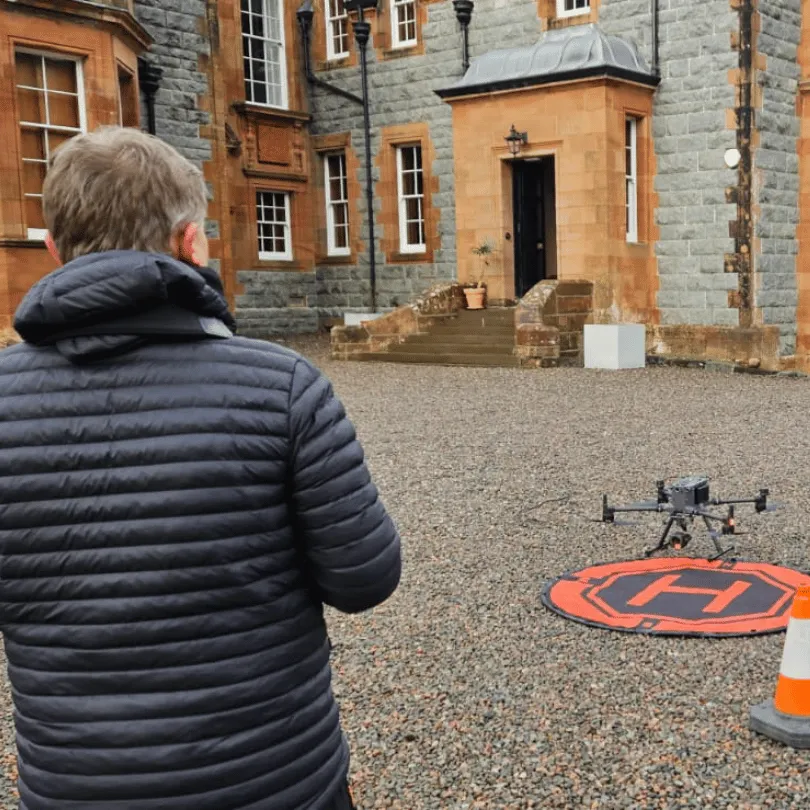
LONDON LANDMARKS AND THE RULES AROUND FLYING DRONES
London is home to some of the most iconic landmarks in the world, attracting millions of tourists each year. However, if you’re a drone enthusiast, you must be aware of the rules and regulations surrounding flying drones near these landmarks. Failure to comply with these rules could result in fines, imprisonment or confiscation of your drone.
BUCKINGHAM PALACE
There is a no-fly zone over Buckingham Palace, flying drones in the area is highly regulated due to its central location and heavy air traffic. Drone pilots must obtain non-standard flight permissions before operating in this area.
LONDON BRIDGE
London Bridge is another iconic landmark that requires non-standard flight permissions. To fly a full aircraft or drone over or near the bridge, pilots must first secure the necessary permissions and adhere to any imposed restrictions.
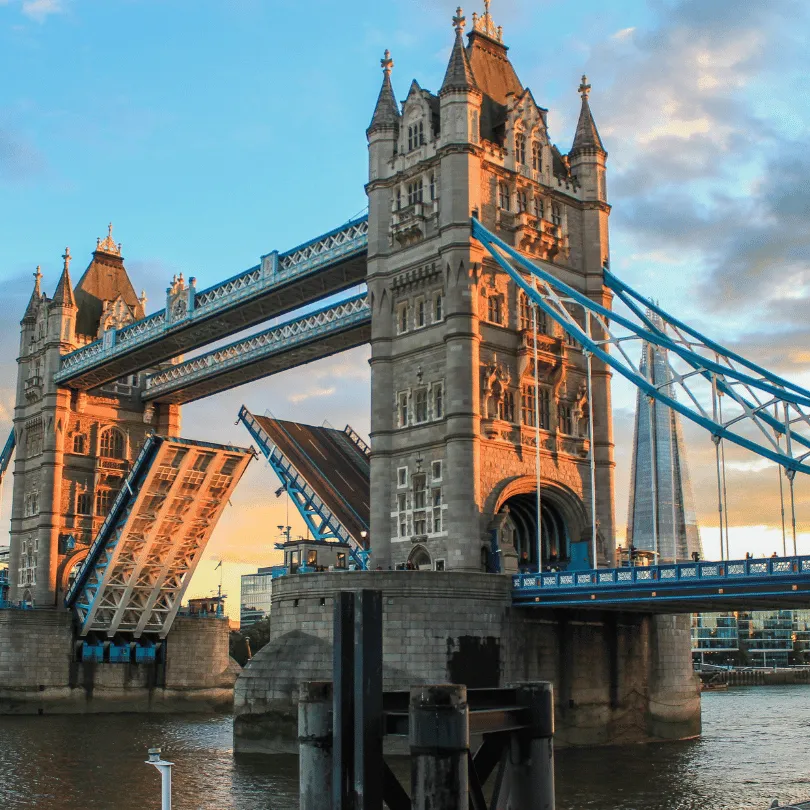
TOWER BRIDGE
Similar to London Bridge, flying small drones from over Tower Bridge is illegal without obtaining permission. Pilots must request and receive approval for non-standard flight permissions before operating in this area.
ST. PAUL’S CATHEDRAL
St. Paul’s Cathedral is a historical and architectural gem, but drone pilots must secure non-standard flight permissions before capturing aerial shots of the landmark. Make sure to follow the established drone license guidelines to avoid any legal issues.
![Can You Fly A Drone In London | London's Drone Laws Explained [year] 3 ST. PAULS CATHEDRAL](https://skykam.co.uk/wp-content/uploads/2024/04/ST.-PAULS-CATHEDRAL.webp)
THE SHARD
As the tallest building in the United Kingdom, The Shard offers breathtaking views of the city. However, flying drones around the building is subject to non-standard flight permissions. Pilots fly drones must obtain the necessary approvals before embarking on their aerial photography adventure.
THE BRITISH MUSEUM
The British Museum houses some of the world’s most valuable artifacts, making it a prime location for drone photography. However, pilots must secure non-standard flight permissions to fly their drones around the museum.
TRAFALGAR SQUARE
Trafalgar Square is a bustling public space that attracts both crowds and thousands of visitors daily. To ensure safety and avoid disruptions to crowds, drone pilots must obtain non-standard flight permissions before flying in this area.
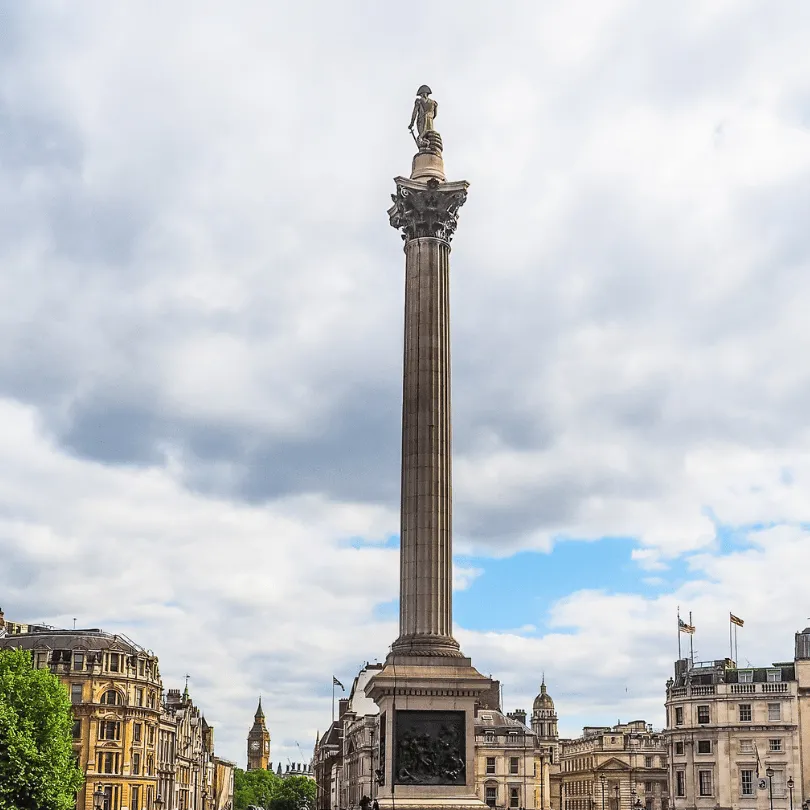
THE HOUSES OF PARLIAMENT
The Houses of Parliament, also known as the Palace of Westminster, is a symbol of British democracy. Drone pilots wishing to capture aerial shots of the landmark must first obtain non-standard flight permissions.
THE TOWER OF LONDON
The Tower of London’s rich history and stunning architecture make it an ideal subject for drone photography. However, pilots must secure non-standard flight permissions before flying their drones around the tower.
THE ROYAL OBSERVATORY, GREENWICH
Home to the Prime Meridian and Greenwich Mean Time, the Royal Observatory is a fascinating landmark for drone photography. Pilots
must secure non-standard flight permissions before operating their drones in this area.
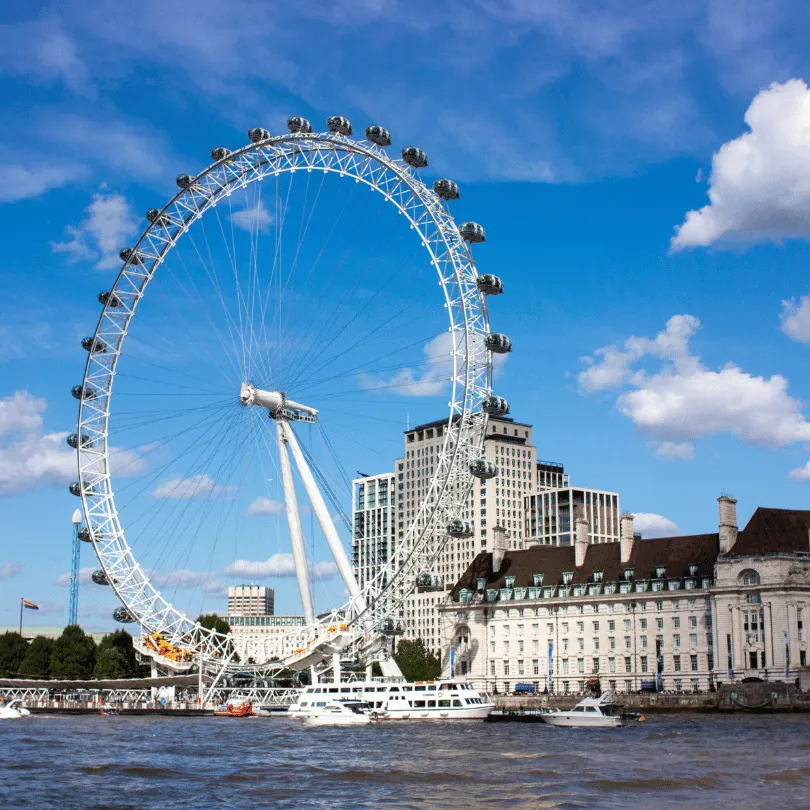
THE COCA-COLA LONDON EYE
The Coca-Cola London Eye, one of the most famous observation wheels in the world, offers a unique perspective of the city. To fly safely with a drone near this popular attraction, pilots must obtain non-standard flight permissions and adhere to any specific guidelines.
THE TATE MODERN
The Tate Modern is a renowned contemporary art museum housed in a former power station. Drone pilots looking to capture the museum’s distinct architecture must first secure non-standard flight permissions.
THE NATURAL HISTORY MUSEUM
The Natural History Museum, with its beautiful architecture, residential buildings and captivating exhibits, is a must-see London landmark. However, drone pilots must obtain non-standard flight permissions before operating in the vicinity of the museum.
CONCLUSION
In conclusion, flying a drone in London requires adherence to strict regulations and guidelines set by various authorities. Drone operators must be aware of restricted zones, specific permissions, and safety measures to ensure responsible and legal drone usage. As a drone pilot, always check with local councils, landowners, and air traffic control before taking flight.
If you are in London and seeking professional drone pilots for your aerial photography or videography needs, consider reaching out to Leslie Drones. With their expertise and knowledge of London’s drone regulations, they can help you capture stunning aerial footage while ensuring compliance with all relevant guidelines.
![Can You Fly A Drone In London | London's Drone Laws Explained [year] 2 flying drone in london london drone laws](https://skykam.co.uk/wp-content/uploads/2024/04/flying-drone-in-london-london-drone-laws.webp)